Jun 19, 2024
•
Deft Team
Ready to bring timeless elegance and functional simplicity into your home? Mid-Century Modern interior design might be just what you need!
Mid-Century Modern interior design has stood the test of time, captivating homeowners and designers alike with its clean lines, functional form, and understated elegance. This interior design movement, which originated in the mid-20th century, continues to influence contemporary interiors with its emphasis on simplicity and functionality.
One of the unique characteristics of Mid-Century Modern design is its ability to blend seamlessly with various styles, making it incredibly versatile. The use of natural materials, minimalist forms, and innovative designs are hallmarks of this style, making spaces feel both sophisticated and inviting.
In this guide, we’ll explore the key elements of Mid-Century Modern design, provide tips on how to incorporate this style into your home, and highlight some iconic furniture pieces that define the era.
What Is Mid-Century Modern Interior Design?
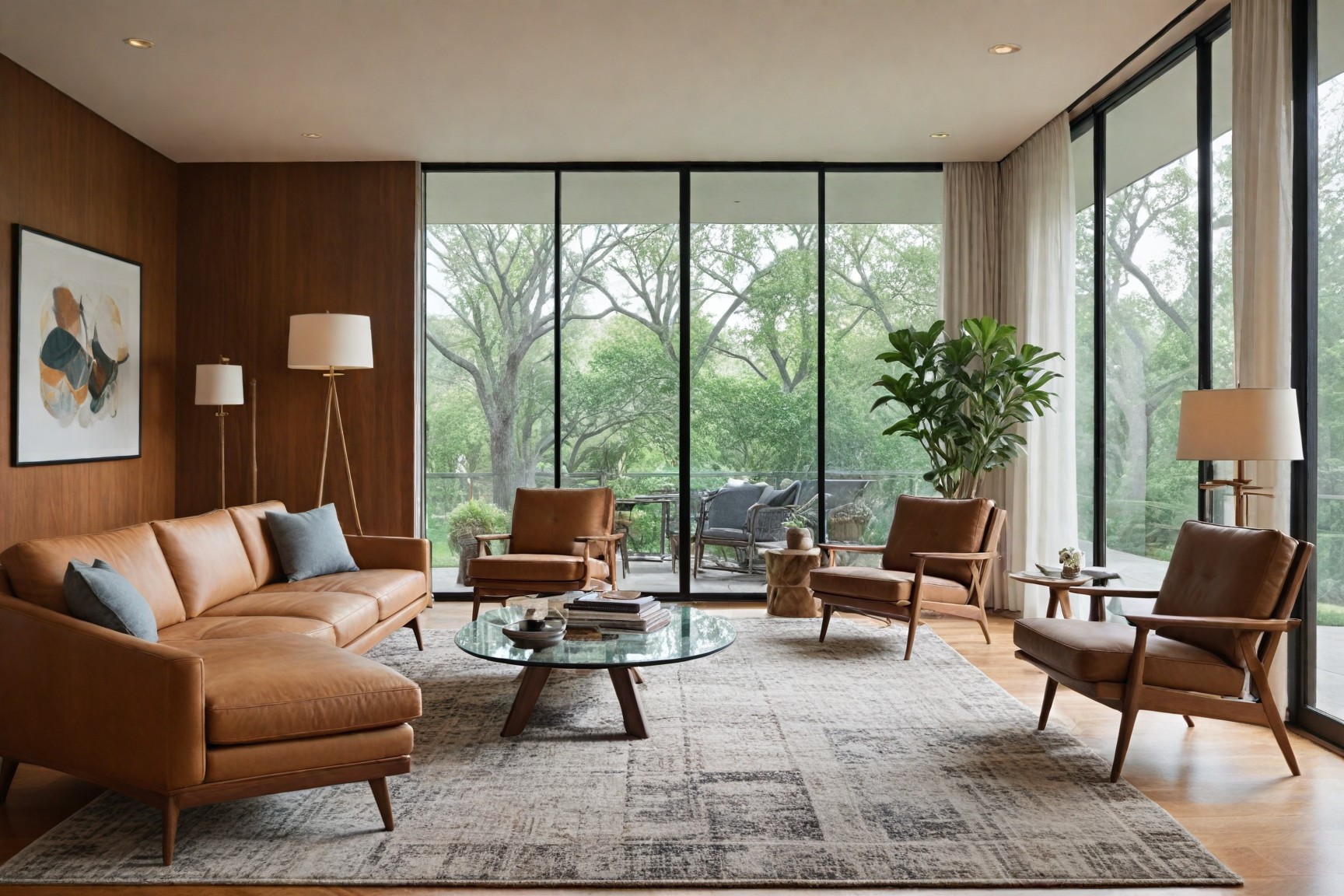
Mid-Century Modern interior design is a style that emerged in the mid-20th century, roughly from the 1940s to the 1960s. It is characterized by clean lines, functional forms, and a minimalist approach to decor. This design movement has had a profound influence on contemporary interiors and continues to be celebrated for its timeless appeal.
Origins and Significance
The Mid-Century Modern design movement began post-World War II, during a time of economic growth and technological advancement. Designers and architects sought to create functional, affordable, and stylish homes for the modern family. The movement is rooted in the Bauhaus and International styles, emphasizing simplicity, utility, and beauty.
Influence on Contemporary Design
Mid-Century Modern design significantly impacted contemporary design, laying the foundation for modern minimalism and influencing various aspects of interior design and architecture. Its principles of form following function and the use of new materials and technologies remain relevant today. The style's emphasis on simplicity and functionality resonates with the modern desire for uncluttered, efficient living spaces.
Brief History and Cultural Background
The Mid-Century Modern movement was heavily influenced by the social and cultural shifts of the mid-20th century. During this period, there was a focus on rebuilding and innovation, leading to the adoption of new materials like plywood, steel, and glass. Designers such as Charles and Ray Eames, Eero Saarinen, and George Nelson became iconic figures in the movement, creating furniture and decor that blended form and function beautifully.
This era also saw a move towards open-plan living spaces, reflecting a more casual and flexible lifestyle. The design principles emphasized organic shapes, minimal ornamentation, and the integration of indoor and outdoor living, often incorporating large windows and open spaces to bring nature inside.
Key Characteristics of Mid-Century Modern Design
Mid-Century Modern design is defined by its clean lines, minimalist aesthetic, and innovative use of materials. Here are the core elements that make this style so timeless and influential:
Clean and Simple Designs
Mid-Century Modern design emphasizes clean, simple lines with a focus on functionality. The furniture often features curves, geometric shapes, and angles, creating a sleek and uncluttered look. Typical items include low-profile sofas, wooden coffee tables with tapered legs, and molded plastic chairs.
Examples:
Eames Lounge Chair
Noguchi Coffee Table

Open Floor Plans
Open floor plans are a hallmark of Mid-Century Modern design, enhancing the sense of space and light. These layouts often feature large, open areas that flow seamlessly from one room to another, promoting a sense of connectivity and fluidity.
Tips for Creating an Open Layout:
Remove unnecessary walls to create a more open space.
Use furniture strategically to define different areas within an open floor plan.
Incorporate large windows and glass doors to enhance natural light and openness.
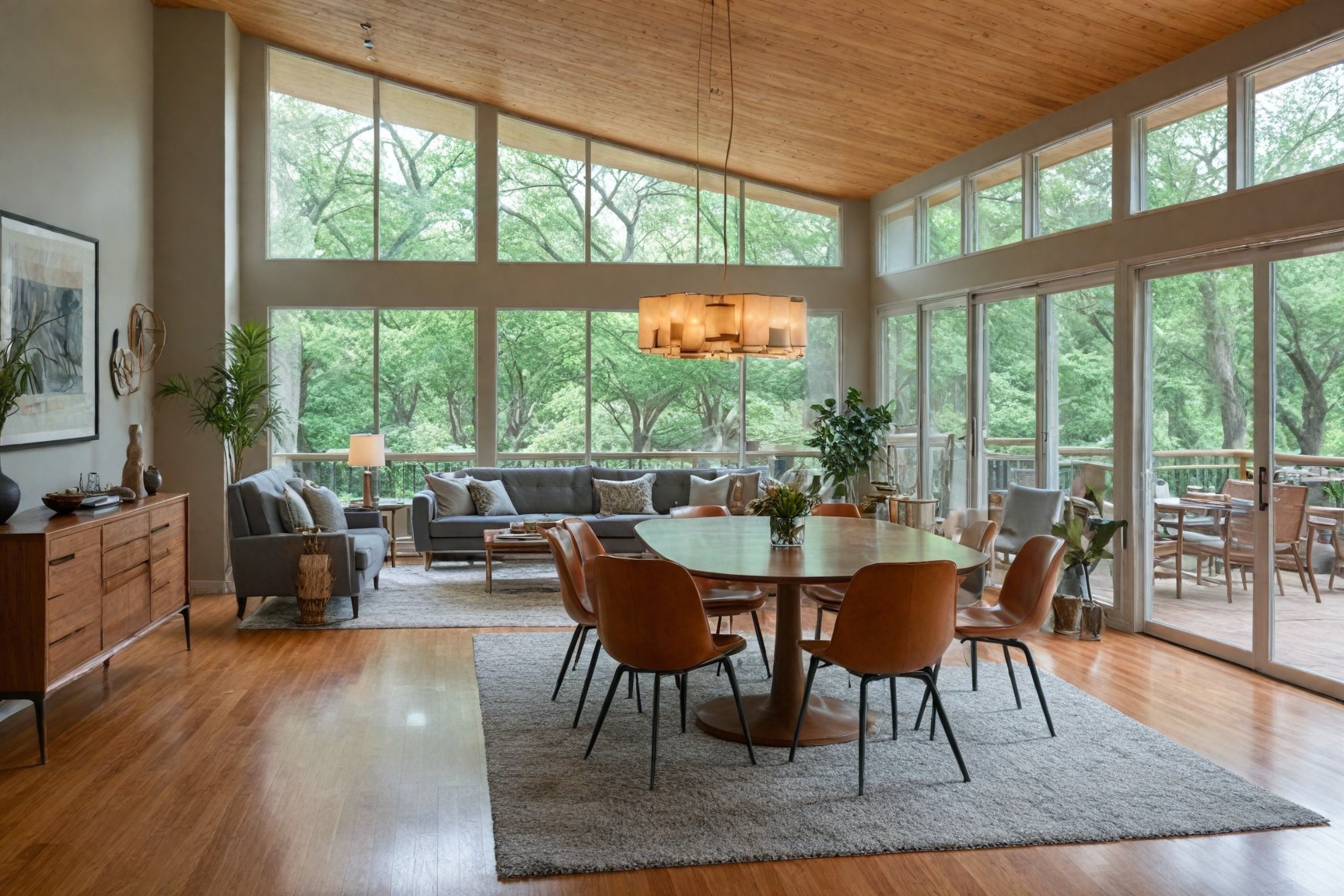
Organic Forms
Nature-inspired shapes and forms are integral to Mid-Century Modern design. Organic elements, such as curved furniture and decor items, create a harmonious and inviting atmosphere. These forms bring a sense of fluidity and softness to the overall design.
Examples:
Arne Jacobsen's Egg Chair
Saarinen's Tulip Table
Contrasting Textures and Materials
Mid-Century Modern design often employs a mix of contrasting materials, such as timber, metal, and glass. This combination adds visual interest and depth to the space, creating a balanced and cohesive look.
Tips for Mixing Textures:
Pair wooden furniture with metal accents.
Use glass elements to add a sense of transparency and lightness.
Incorporate textiles like wool or leather for added texture.
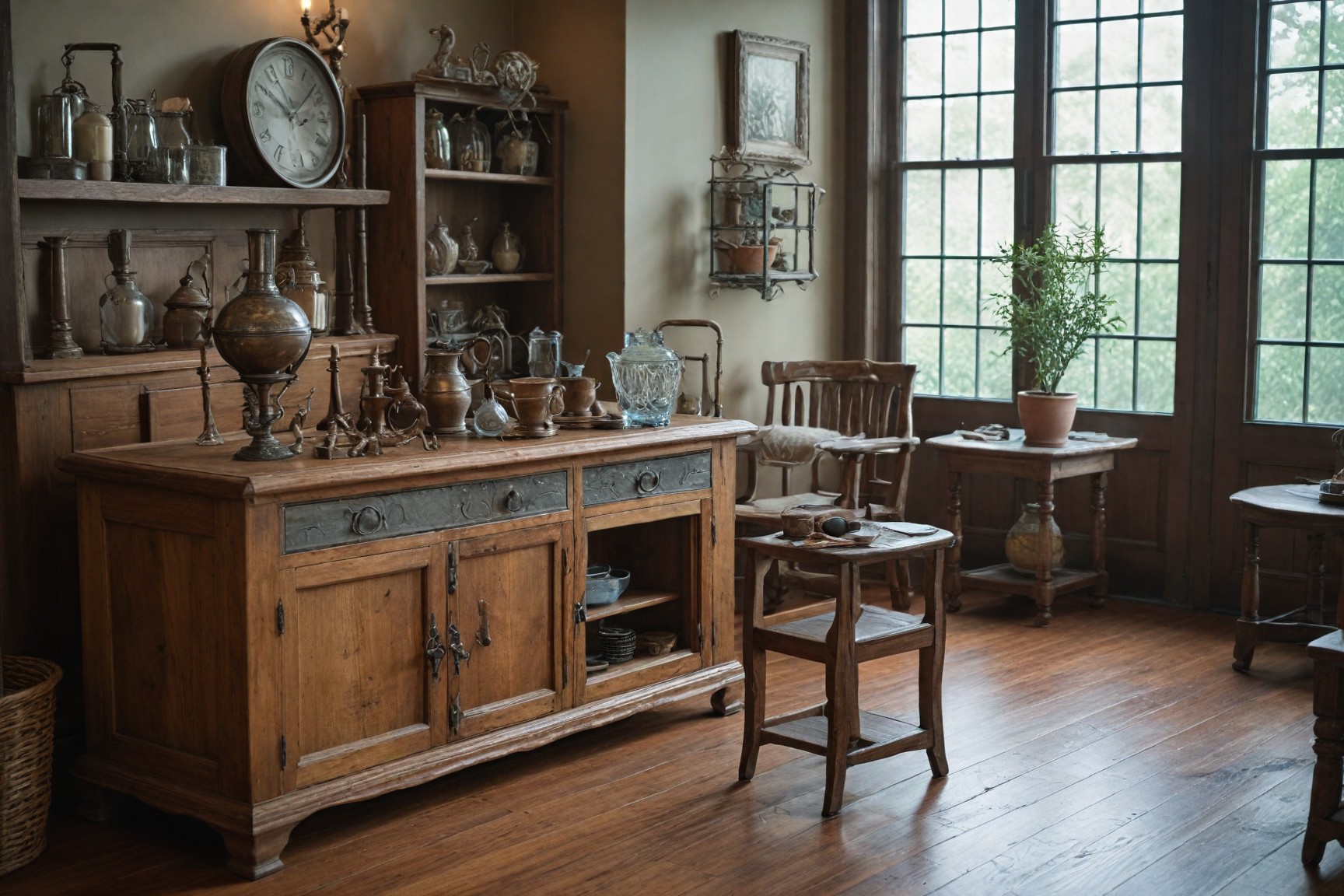
Innovative Materials
The use of innovative materials, such as molded plastics and fiberglass, is a defining characteristic of Mid-Century Modern design. These materials allowed designers to create new forms and structures that were not possible with traditional materials.
Examples:
Eames Molded Plastic Chairs
Bertoia Wire Chairs

Floor-to-Ceiling Windows
Floor-to-ceiling windows are a key feature of Mid-Century Modern homes, connecting indoor and outdoor spaces and maximizing natural light. These windows create a seamless flow between the interior and exterior, enhancing the sense of openness and bringing the beauty of the outdoors inside.
Tips for Maximizing Natural Light:
Use sheer curtains or no window coverings to allow maximum light.
Position furniture to take advantage of the views and natural light.
Incorporate large sliding doors or glass walls to enhance the indoor-outdoor connection.
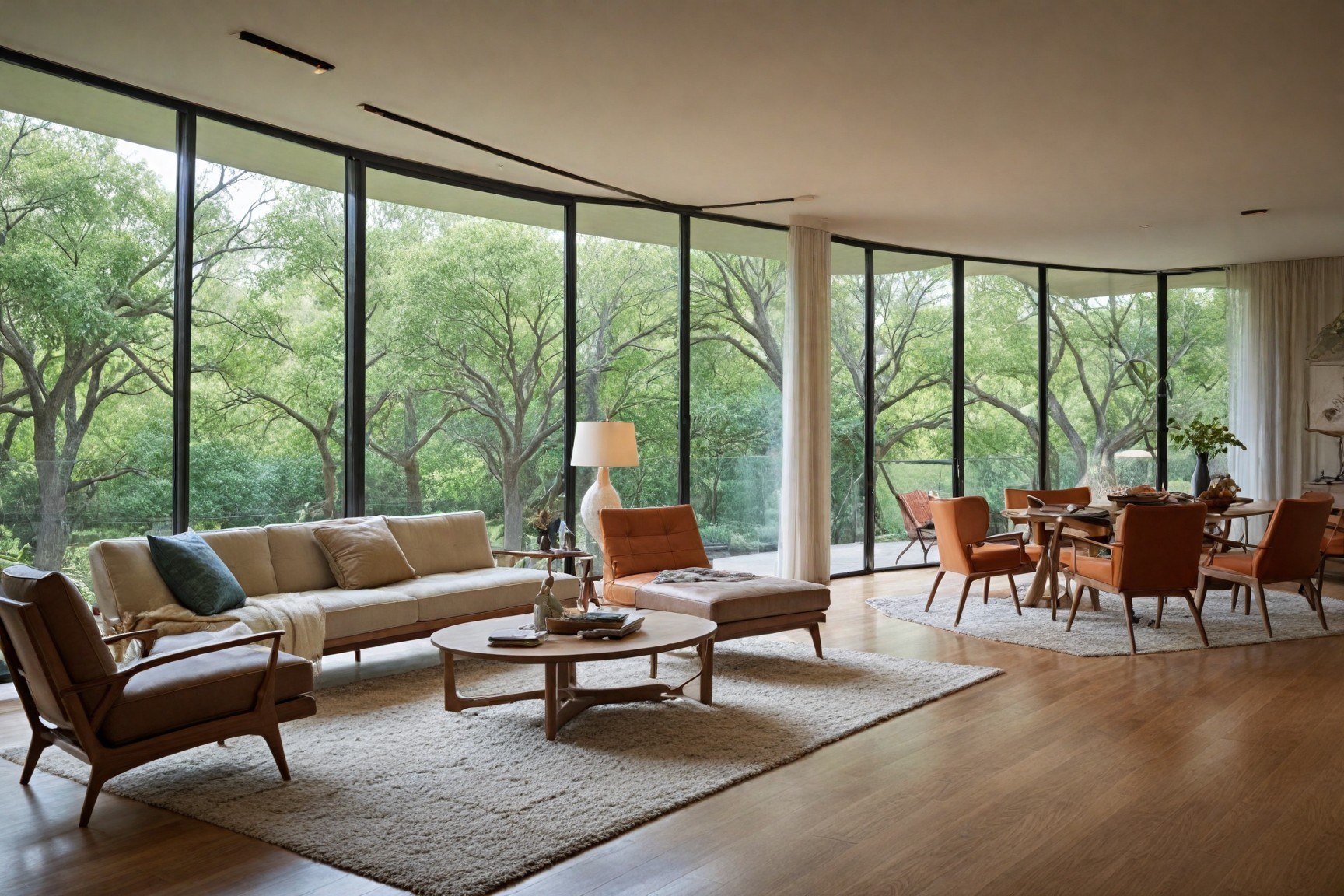
Styling Tips for Mid-Century Modern Interior Design
Styling a Mid-Century Modern interior involves a careful balance of minimalism, functionality, and a mix of vintage and contemporary elements. Here are some practical tips to help you achieve this timeless look in your home:
Practice Minimalism
Mid-Century Modern design embraces a less-is-more approach, focusing on clean, straight lines and uncluttered spaces. Select furniture and decor that have simple, geometric shapes and avoid over-accessorizing.
Tips:
Choose furniture with sleek, straight lines and minimal ornamentation.
Keep decor simple and purposeful, avoiding unnecessary clutter.
Use neutral colors as a base and add pops of color with accessories.
Deft can help you find minimalistic Mid-Century Modern furniture that perfectly fits this aesthetic.
Opt for Multifunctional Furniture
Multifunctional furniture helps maintain an uncluttered space by serving multiple purposes. This is especially useful in smaller spaces where every piece of furniture needs to be both practical and stylish.
Examples:
A coffee table with storage compartments.
A sofa that doubles as a guest bed.
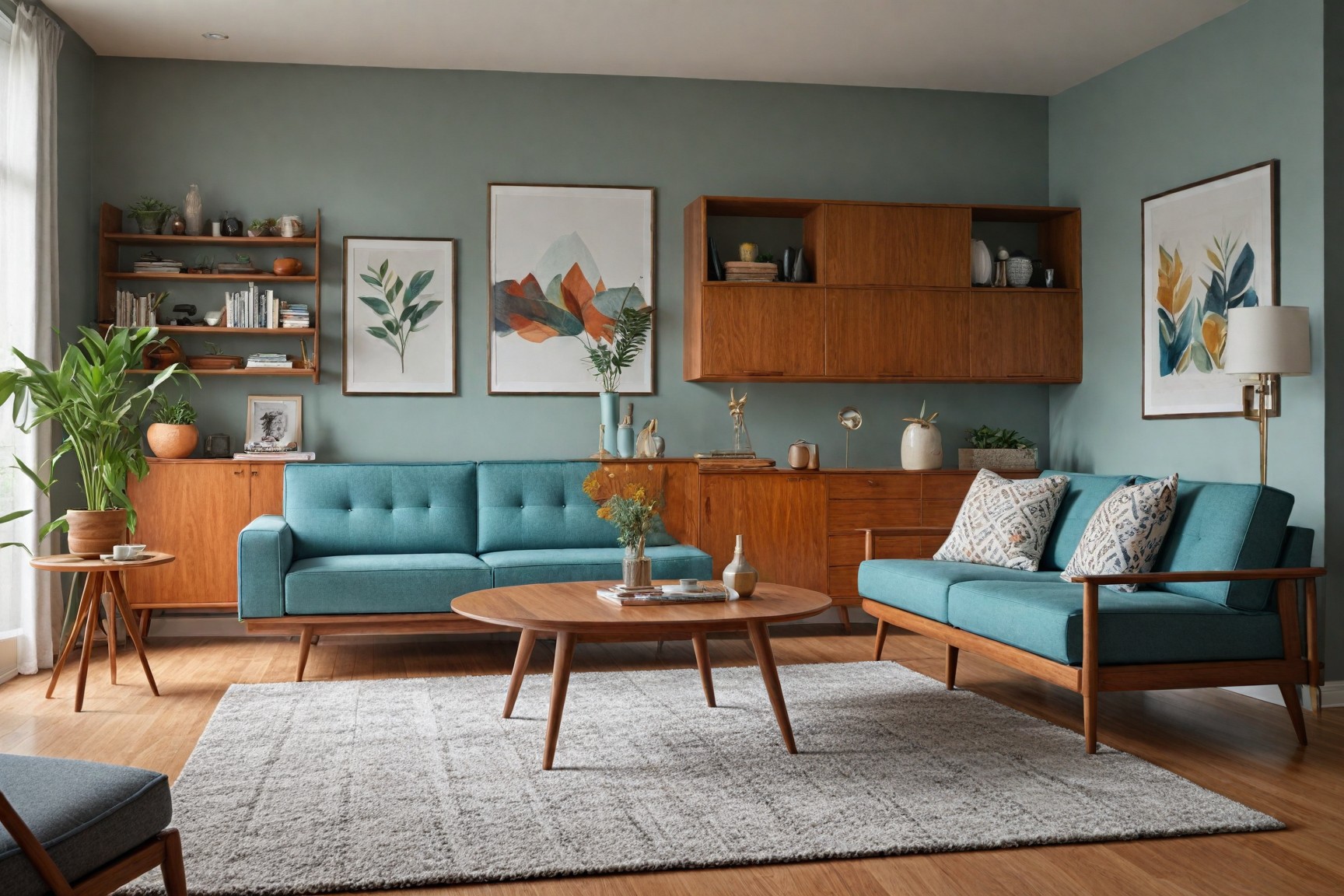
Mix Vintage and Contemporary Pieces
Balancing vintage and contemporary elements can create a dynamic and cohesive Mid-Century Modern interior. Combining these pieces allows you to add character and keep the space feeling fresh and current.
Tips:
Pair a vintage wooden coffee table with a modern sofa.
Use contemporary lighting fixtures with vintage chairs.
Bring in Statement Pieces
Key statement pieces can elevate the overall design and serve as focal points in the room. These pieces often reflect the bold, innovative spirit of Mid-Century Modern design.
Tips:
Select a statement chair, such as an Eames Lounge Chair, to anchor the room.
Use bold artwork or a unique light fixture to draw attention.
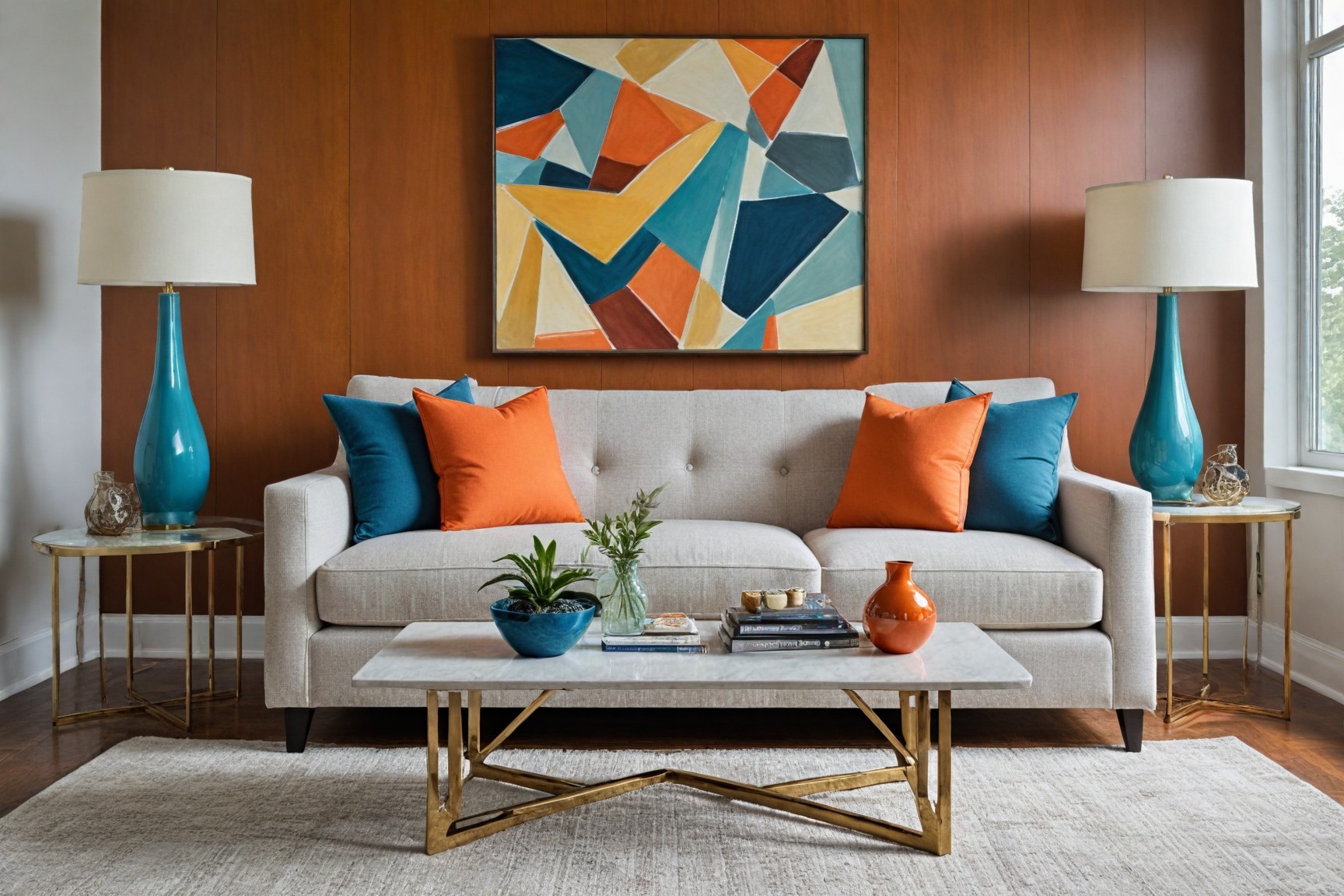
Choose Furniture that Sits Off the Ground
Furniture with slender legs or raised bases creates a sense of openness and makes the room feel larger. This is a common feature in Mid-Century Modern design, emphasizing the light and airy feel.
Examples:
Sofas and chairs with tapered wooden legs.
Cabinets and sideboards elevated on slender legs.
Introduce Plants
Plants play a significant role in connecting indoor and outdoor spaces, a key aspect of Mid-Century Modern design. They add a touch of nature and freshness to the room.
Tips:
Choose low-maintenance indoor plants like succulents, snake plants, or rubber trees.
Arrange plants in stylish pots that complement your decor.

Examples of Mid-Century Modern Interiors
Mid-Century Modern design can be beautifully incorporated into various rooms in your home, creating spaces that are both functional and stylish. Here are some examples of different Mid-Century Modern interiors and tips on how to recreate these looks using similar items.
Living Room
A Mid-Century Modern living room often features clean lines, minimalist decor, and a mix of vintage and contemporary pieces. Key elements include low-profile sofas, wooden coffee tables, and statement chairs. To recreate this look, choose a sleek sofa with tapered legs and pair it with a wooden coffee table. Adding a statement chair, like an Eames Lounge Chair, can anchor the room. Use a neutral color palette and introduce pops of bold colors through cushions and artwork.
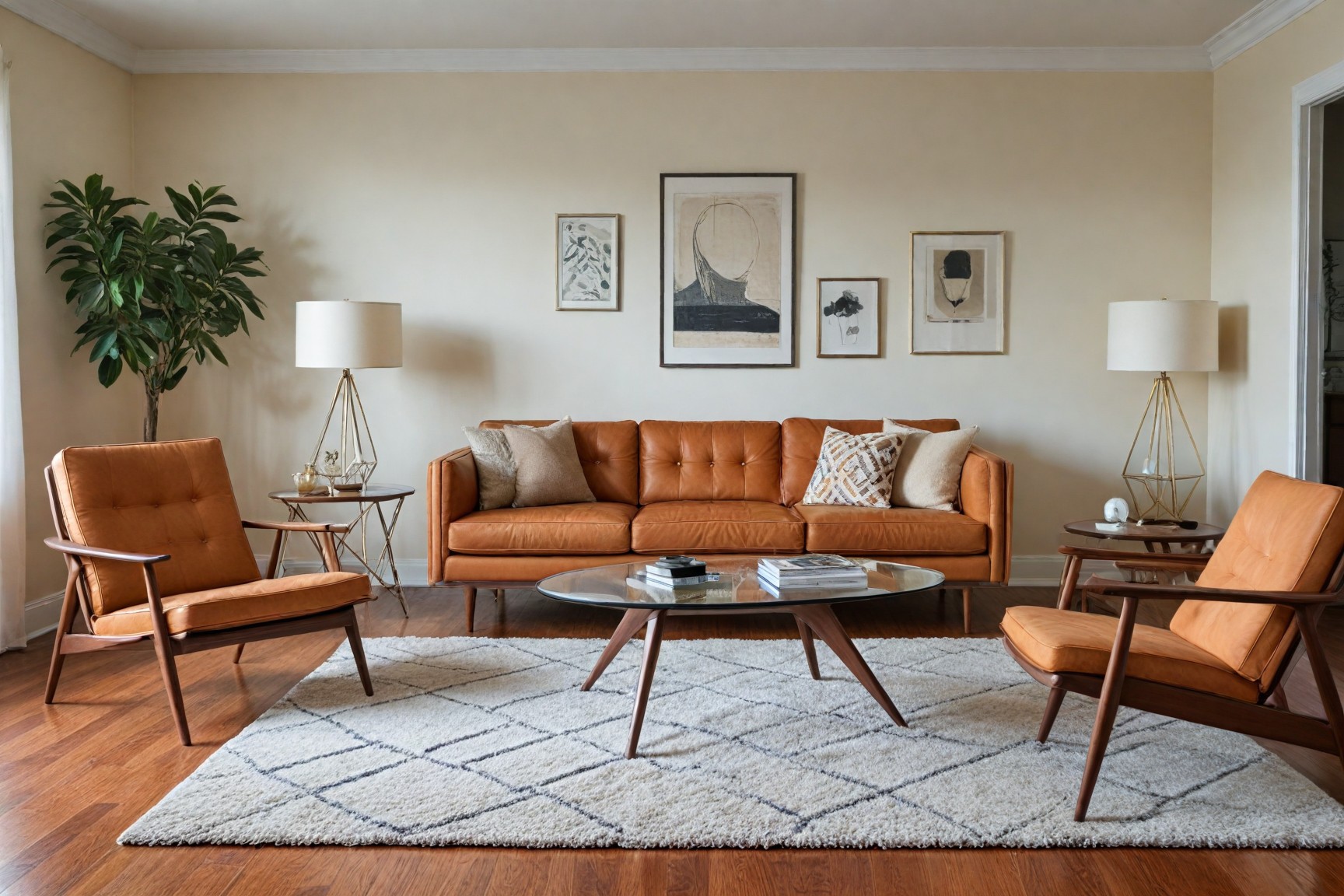
Bedroom
Mid-Century Modern bedrooms are serene and stylish, characterized by minimalist furniture and natural materials. Opt for a low-profile platform bed with clean lines and complement it with a wooden dresser featuring simple hardware. Incorporate geometric patterns through bedding and wall art to add visual interest.

Dining Room
A Mid-Century Modern dining room combines functionality with style. Common elements include a wooden dining table, mixed dining chairs, and bold light fixtures. Select a wooden dining table with sleek lines and mix and match different styles of dining chairs for an eclectic look. A bold, modern light fixture can serve as a focal point, enhancing the room's overall aesthetic.
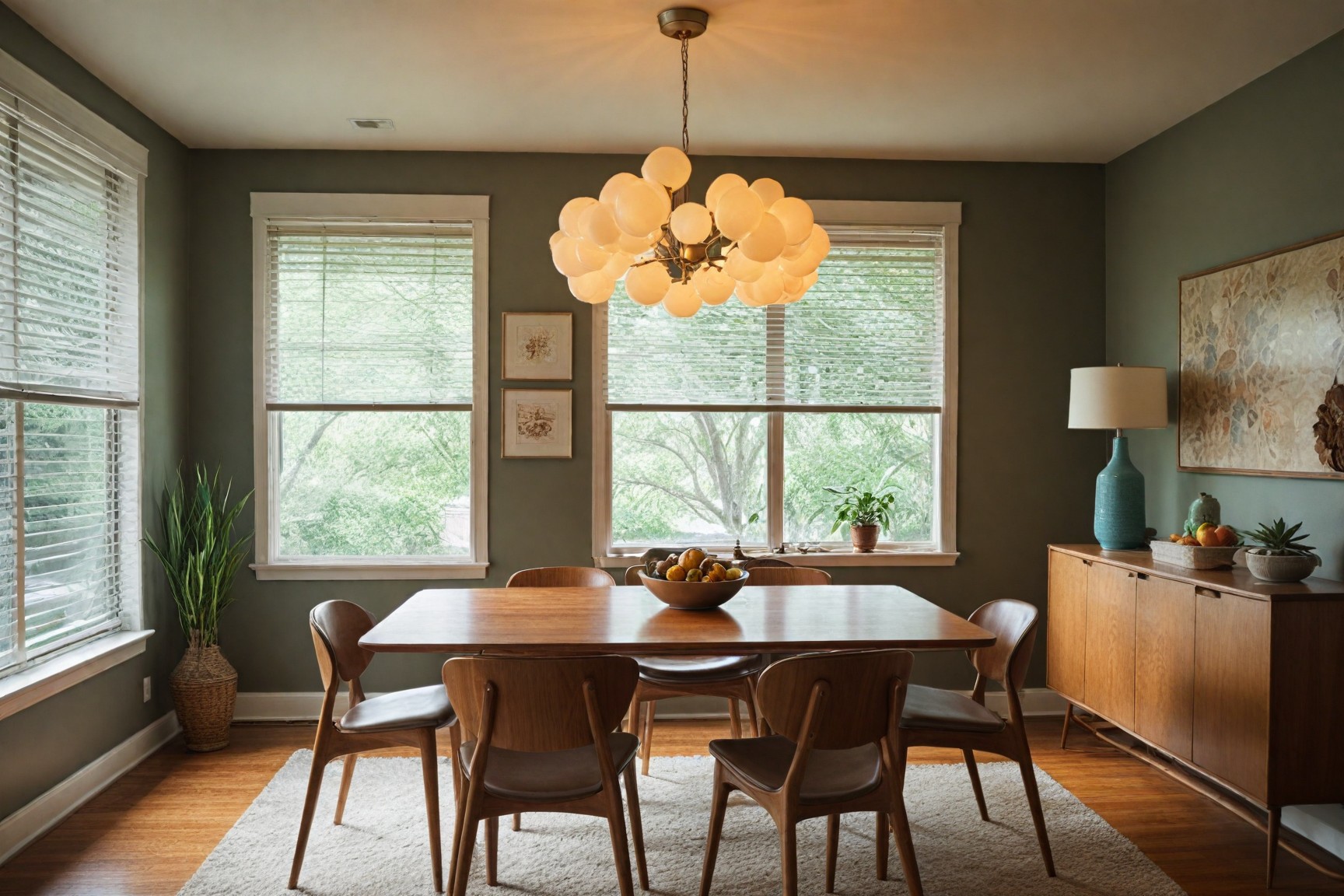
Kitchen
Mid-Century Modern kitchens are practical yet stylish, featuring clean lines, functional layouts, and a mix of materials. Choose sleek, flat-panel cabinetry in wood or white finishes, and use minimalist countertops such as quartz or marble. Adding a geometric backsplash can introduce visual interest and tie the design together.

Home Office
A Mid-Century Modern home office combines productivity with aesthetic appeal. Key elements include a wooden desk, ergonomic chair, and minimalist decor. To recreate this look, select a wooden desk with clean lines and ample workspace. Choose an ergonomic chair with a mid-century design and keep decor minimal, using items like a stylish desk lamp and a few personal touches.

By incorporating these elements, you can transform various rooms in your home into stylish Mid-Century Modern spaces.
Common Questions About Mid-Century Modern Design
What Are the Best Colors for Mid-Century Modern Design?
Mid-Century Modern design typically features a blend of bold and muted colors, creating a balanced and inviting atmosphere. Popular color palettes include earthy tones like browns, tans, and greens, bold accents such as oranges, teals, and yellows, and neutral colors like whites, grays, and blacks. These colors combine to create a harmonious look that is both striking and understated.
How Do I Mix Mid-Century Modern with Other Styles?
Blending Mid-Century Modern with other design styles involves identifying common elements, balancing proportions, and using transitional pieces. For example, you can mix a Mid-Century Modern sofa with a contemporary coffee table or incorporate industrial elements like metal and exposed brick to add contrast. Successful combinations might include mixing Mid-Century Modern with Scandinavian design for a cohesive look.
What Are the Essential Furniture Pieces for Mid-Century Modern Design?
Essential furniture items for achieving a Mid-Century Modern look include the Eames Lounge Chair and Ottoman, Noguchi Coffee Table, Tulip Table, platform bed, and a credenza or sideboard. When sourcing these pieces, look for high-quality reproductions or search vintage shops and online marketplaces for authentic finds.
How Do I Create a Functional Mid-Century Modern Space?
Creating a functional Mid-Century Modern space involves prioritizing function, embracing minimalism, incorporating stylish storage solutions, and maximizing natural light. Choose furniture and decor that serve a purpose and keep the space uncluttered by selecting a few key pieces. Use large windows and minimal window coverings to enhance the open and airy feel.
Embrace Mid-Century Modern Design with Deft
Mid-Century Modern design combines clean lines, functional aesthetics, and innovative materials to create timeless interiors. By incorporating key elements, choosing essential furniture pieces, and blending styles, you can transform your space into a stylish and functional Mid-Century Modern haven.
For more inspiration and assistance in visualizing and implementing Mid-Century Modern design, explore the tools and curated furniture selections available at Deft. Create your perfect Mid-Century Modern home with ease!
